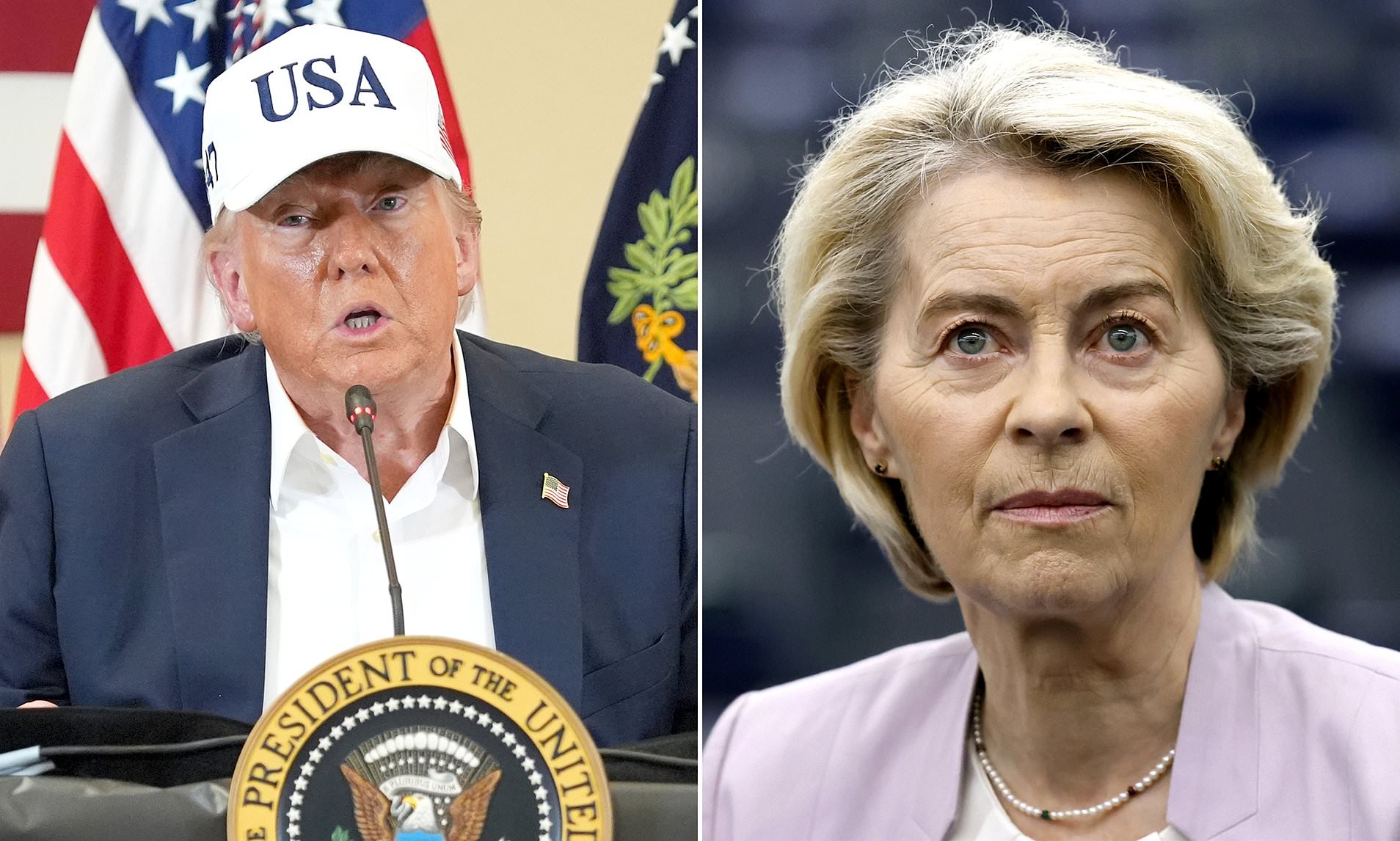Trump unveils bold tariffs on top trading partner

Trump's Tariff Strategy: A New Era of Trade Tensions
President Donald Trump has taken a bold step in reshaping international trade relations by imposing sweeping tariffs on the United States' largest trading partners. His move comes as he continues to frame the trade deficit as a significant threat to America's economy. This strategy has sent ripples through global markets and sparked intense discussions about the future of international commerce.
The European Union Faces Increased Tariffs
In a letter addressed to Ursula von der Leyen, President of the European Commission, Trump announced that the U.S. would implement a 30% tariff on imports from the European Union starting August 1. This decision marks a shift in the ongoing dialogue between the two economic powerhouses, as the EU had been hoping to negotiate a comprehensive trade agreement with the U.S. for its 27-member bloc.
Trump emphasized that the EU maintains the "largest trade deficits" with the U.S., which he claims poses a major threat to the American economy and national security. He stated, "This Deficit is a major threat to our Economy and, indeed, our National Security!" While acknowledging that the 30% tariff is less than what is needed to eliminate the trade deficit disparity, Trump expressed his commitment to achieving more balanced and fair trade practices.
To encourage the EU to reconsider its stance, Trump offered an alternative: building manufacturing facilities in the U.S. These facilities could potentially eliminate the 30% tariff, but only if they are approved within a matter of weeks. This offer highlights his focus on creating jobs and boosting domestic production.
Expanding Tariff Measures to Other Nations
Trump’s approach extends beyond the EU. Earlier this week, he issued new tariff announcements targeting several countries, including Japan, South Korea, Canada, and Brazil. Additionally, a 50% tariff was imposed on copper. These measures reflect a broader strategy aimed at protecting American industries and reducing trade imbalances.
The situation with Canada has become particularly contentious. Trump's recent letter to Prime Minister Mark Carney introduced a 35% tariff on Canadian products, effective August 1, which represents a 10% increase over the current levy. This move has thrown a wrench into the ongoing negotiations between the two nations, which have been trying to resolve the tariff war that began when Trump returned to office.
Fentanyl Crisis and Trade Barriers
In his letter to Carney, Trump cited the fentanyl crisis as a key reason for the tariff hike, accusing Canada of failing to stop the flow of drugs into the U.S. He also highlighted other challenges, including numerous tariff and non-tariff policies and trade barriers that Canada has implemented. Despite these issues, Trump expressed a commitment to maintaining the trade relationship with Canada, stating that the U.S. has continued to work with Canada even after facing financial retaliation.
However, the letter also served as a warning. Trump vowed to continue increasing U.S. tariffs if Canada imposes retaliatory taxes. He suggested that the tariffs could be adjusted—either upward or downward—depending on the state of the relationship between the two countries.
Impact on American Consumers
The latest round of tariffs adds to previously imposed sectoral tariffs on steel, copper, and aluminum, which came into effect for most countries on June 4 at a 50% rate. These measures have raised concerns among American households about potential increases in the cost of everyday items. Foreign-made steel and aluminum are used in a wide range of products, from soup cans and paper clips to big-ticket items like stainless-steel refrigerators and cars.
Previously, these metals faced 25% tariffs worldwide since mid-March, following Trump’s order to remove steel exemptions and raise aluminum’s levy. The impact of these tariffs on consumers remains a point of contention, with critics arguing that they could lead to higher prices and reduced availability of certain goods.
Conclusion
Trump's tariff strategy reflects a broader vision of redefining international trade relations, prioritizing domestic interests and addressing perceived imbalances. While his actions have sparked both support and criticism, they underscore the complex dynamics at play in global commerce. As negotiations continue with various trading partners, the implications of these tariffs will likely shape the economic landscape for years to come.
Posting Komentar